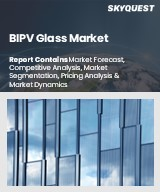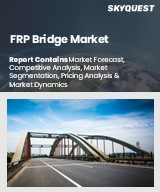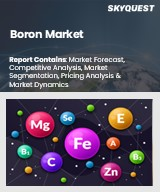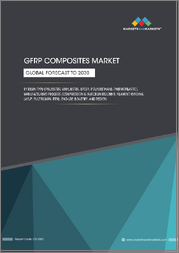
|
시장보고서
상품코드
1813878
LCD 유리 시장 규모, 점유율, 동향 분석 보고서 : 기판 재료별, 용도별, 지역별, 부문별 예측(2025-2033년)LCD Glass Market Size, Share & Trends Analysis Report By Substrate Material (Alkali-free Glass, Borosilicate Glass), By Application (LCD TVs, Desktop Monitors), By Region, And Segment Forecasts, 2025 - 2033 |
||||||
LCD 유리 시장 요약
세계 LCD 유리 시장 규모는 2024년에 96억 4,000만 달러로 추정되며, 2025년부터 2033년까지 CAGR 5.5%로 2033년에는 154억 2,000만 달러에 달할 것으로 예상됩니다.
이 시장은 스마트폰, 태블릿, 노트북, 노트북, TV 등 가전제품에 대한 전 세계적인 수요로 인해 크게 성장하고 있습니다. 디스플레이 기술이 발전하고 소비자의 취향이 더 얇고 가볍고 고해상도 화면으로 이동함에 따라 제조업체는 고품질 LCD 유리의 소비를 늘리고 있습니다.
가처분 소득의 증가, 인터넷 보급 확대, 선진국과 신흥 경제국의 디지털 미디어 소비 증가로 인해 LCD 패널을 사용하는 기기의 보급이 가속화되고 있습니다. 디스플레이용 유리 제조 기술의 발전은 시장 확대에 크게 기여하고 있습니다. 초박형 기판, 내구성 향상, 광학 특성 개선과 같은 기술 혁신은 보다 진보된 디스플레이 응용을 가능하게 합니다. 이러한 강화는 접이식 장치, 자동차 대시보드, 웨어러블 스크린 등 새로운 제품 포맷의 통합을 지원합니다. R&D 투자가 확대됨에 따라 LCD와 새로운 유형의 디스플레이의 성능 차이가 줄어들고 있으며, 이 기술은 비용에 민감한 시장에서 경쟁력을 유지할 수 있게 되었습니다.
자동차 산업은 중요한 최종 이용 산업으로 부상하고 있습니다. ADAS(첨단 운전자 보조 시스템), 디지털 계기판, 인포테인먼트 시스템, 헤드업 디스플레이의 채용으로 견고하고 고성능의 유리에 대한 수요가 증가하고 있습니다. 자동차 제조업체들은 사용자 경험을 향상시키기 위해 더 큰 스크린을 자동차 인테리어에 통합하고 있으며, 이는 특수 소재의 소비 증가에 기여하고 있습니다. 이러한 추세는 북미, 유럽, 아시아 전체에서 스마트카 및 커넥티드카로의 광범위한 전환과 일치합니다.
또 다른 주요 원동력은 특히 TV와 상업용 사이니지에서 대형 패널에 대한 수요 증가입니다. 가정용 및 상업용 애플리케이션에서 CRT 및 플라즈마 스크린에서 평판 디스플레이로의 전환이 전 세계적으로 시장을 확대하고 있습니다. 스크린의 크기가 커짐에 따라, 1대당 필요한 기판 유리의 양과 품질도 증가합니다. 이러한 역동적인 움직임은 가격 경쟁 및 패널 효율 향상과 함께 OLED와의 경쟁에도 불구하고 LCD에 유리하게 작용하고 있습니다.
중국, 한국, 인도 등의 지역에서는 디스플레이 패널 제조에 대한 정부의 지원 정책과 투자가 시장을 견인하고 있습니다. 이들 국가들은 수입 의존도를 줄이고 기술력을 강화하기 위해 평판 패널의 국내 생산에 인센티브를 부여하고 있습니다. 현지 생산기지 설립은 패널 제조업체에 비용 효율성을 가져다주는 동시에 디스플레이용 유리를 포함한 업스트림 소재의 수요를 촉진할 수 있습니다. 이러한 지역적 요인으로 인해 예측 기간 동안 수요 성장이 지속될 것으로 예상됩니다.
목차
제1장 조사 방법과 범위
제2장 주요 요약
제3장 시장 변수, 동향, 범위
- 시장 전망
- 업계 밸류체인 분석
- 판매 채널 분석
- 테크놀러지 개요
- 규제 프레임워크
- 시장 역학
- 시장 성장 촉진요인 분석
- 시장 성장 억제요인 분석
- 업계 동향
- ESG 분석
- 경제 동향
- Porter's Five Forces 분석
- 공급 기업의 교섭력
- 구매자의 교섭력
- 대체의 위협
- 신규 참여업체의 위협
- 경쟁 기업 간의 경쟁 관계
- PESTLE 분석
- 정치적
- 경제
- 사회 상황
- 테크놀러지
- 환경
- 법률상
제4장 LCD 유리 시장 : 기판 재료 추정·동향 분석
- LCD 유리 시장 : 기판 재료 변동 분석, 2024년 및 2033년
- 무알칼리 유리
- 붕규산 유리
제5장 LCD 유리 시장 : 용도 추정·동향 분석
- LCD 유리 시장 : 용도 변동 분석, 2024년 및 2033년
- 액정 TV
- 데스크톱 모니터
- 노트북
- 스마트폰과 태블릿
- 기타
제6장 LCD 유리 시장 : 지역 추정·동향 분석
- 지역 분석, 2024년과 2033년
- 북미
- 기판 재료별, 2021-2033년
- 용도별, 2021-2033년
- 미국
- 캐나다
- 멕시코
- 유럽
- 기판 재료별, 2021-2033년
- 용도별, 2021-2033년
- 독일
- 영국
- 이탈리아
- 프랑스
- 아시아태평양
- 기판 재료별, 2021-2033년
- 용도별, 2021-2033년
- 중국
- 인도
- 일본
- 한국
- 라틴아메리카
- 기판 재료별, 2021-2033년
- 용도별, 2021-2033년
- 브라질
- 중동 및 아프리카
- 기판 재료별, 2021-2033년
- 용도별, 2021-2033년
제7장 경쟁 구도
- 주요 시장 진입 기업의 최근 동향과 영향 분석
- 기업 분류
- 히트맵 분석
- 벤더 상황
- 판매대리점 리스트
- List of prospective end-users
- Strategy Initiatives
- 기업 개요/상장 기업
- Corning Incorporated
- Asahi Glass Co., Ltd.(AGC)
- Nippon Electric Glass Co., Ltd.(NEG)
- LG Display Co., Ltd.
- Samsung Display Co., Ltd.
- Sharp Corporation
- BOE Technology Group Co., Ltd.
- China National Building Material Group Corporation(CNBM)
- Schott AG
- TCL Technology Group Corporation
LCD Glass Market Summary
The global LCD glass market size was estimated at USD 9.64 billion in 2024 and is projected to reach USD 15.42 billion by 2033, at a CAGR of 5.5% from 2025 to 2033. The market is witnessing substantial growth driven by the global demand for consumer electronics such as smartphones, tablets, laptops, and televisions. As display technologies evolve and consumer preferences shift towards thinner, lighter, and higher-resolution screens, manufacturers are increasing their consumption of high-quality LCD glass.
The proliferation of devices using LCD panels is accelerating due to rising disposable incomes, expanding internet penetration, and increased digital media consumption across developed and developing economies. Technological advancements in display glass manufacturing are significantly contributing to market expansion. Innovations such as ultra-thin substrates, improved durability, and better optical properties enable more sophisticated display applications. These enhancements support integrating newer product formats, including foldable devices, automotive dashboards, and wearable screens. As R&D investments grow, the performance gap between LCDs and emerging display types is narrowing, allowing this technology to remain competitive in cost-sensitive markets.
The automotive sector has emerged as a crucial end-use industry. Demand for robust and high-performance glass is rising with the adoption of advanced driver-assistance systems (ADAS), digital instrument clusters, infotainment systems, and head-up displays. Automakers are increasingly integrating larger screens into vehicle interiors to improve user experience, contributing to higher consumption of specialty materials. This trend aligns with the broader shift toward smart and connected vehicles across North America, Europe, and Asia.
Another key driver is the rising demand for large-sized panels, especially in television and commercial signage. The global transition from CRT and plasma screens to flat-panel displays in residential and commercial applications is expanding the market. As screen sizes increase, the quantity and quality of substrate glass required per unit also rise. This dynamic, coupled with competitive pricing and improvements in panel efficiency, continues to favor LCDs despite competition from OLED.
Supportive government policies and investments in display panel manufacturing are boosting the market in regions like China, South Korea, and India. These countries are incentivizing domestic production of flat panels to reduce import dependency and strengthen technological capabilities. Establishing local manufacturing hubs drives demand for upstream materials, including display glass, while creating cost efficiencies for panel makers. This regional push is expected to sustain demand growth over the forecast period.
Global LCD Glass Market Report Segmentation
This report forecasts revenue and volume growth at global, regional, and country levels and provides an analysis of the latest industry trends in each of the sub-segments from 2021 to 2033. For this study, Grand View Research has segmented the global LCD glass market report based on substrate material, application, and region.
- Substrate Material Outlook (Volume, Kilotons; Revenue, USD Million, 2021 - 2033)
- Alkali-free Glass
- Borosilicate Glass
- Application Outlook (Volume, Kilotons; Revenue, USD Million, 2021 - 2033)
- LCD TVs
- Desktop Monitors
- Notebook PCs
- Smartphones & Tablets
- Others
- Regional Outlook (Volume, Kilotons; Revenue, USD Million, 2021 - 2033)
- North America
- U.S.
- Canada
- Mexico
- Europe
- Germany
- UK
- Italy
- France
- Asia Pacific
- China
- India
- Japan
- South Korea
- Latin America
- Brazil
- Middle East & Africa
Table of Contents
Chapter 1. Methodology and Scope
- 1.1. Market Segmentation & Scope
- 1.2. Market Definition
- 1.3. Information Procurement
- 1.3.1. Information Analysis
- 1.3.2. Data Analysis Models
- 1.3.3. Market Formulation & Data Visualization
- 1.3.4. Data Validation & Publishing
- 1.4. Research Scope and Assumptions
- 1.4.1. List of Data Sources
Chapter 2. Executive Summary
- 2.1. Market Outlook
- 2.2. Segmental Outlook
- 2.3. Competitive Outlook
Chapter 3. Market Variables, Trends, and Scope
- 3.1. Market Outlook
- 3.2. Industry Value Chain Analysis
- 3.2.1. Sales Channel Analysis
- 3.3. Technology Overview
- 3.4. Regulatory Framework
- 3.5. Market Dynamics
- 3.5.1. Market Driver Analysis
- 3.5.2. Market Restraint Analysis
- 3.6. Industry Trends
- 3.6.1. ESG Analysis
- 3.6.2. Economic Trends
- 3.7. Porter's Five Forces Analysis
- 3.7.1. Bargaining Power of Suppliers
- 3.7.2. Bargaining Power of Buyers
- 3.7.3. Threat of Substitution
- 3.7.4. Threat of New Entrants
- 3.7.5. Competitive Rivalry
- 3.8. PESTLE Analysis
- 3.8.1. Political
- 3.8.2. Economic
- 3.8.3. Social Landscape
- 3.8.4. Technology
- 3.8.5. Environmental
- 3.8.6. Legal
Chapter 4. LCD Glass Market: Substrate Material Estimates & Trend Analysis
- 4.1. LCD Glass Market: Substrate Material Movement Analysis, 2024 & 2033
- 4.2. Alkali-free Glass
- 4.2.1. Market estimates and forecasts, 2021 - 2033 (USD Million) (Kilotons)
- 4.3. Borosilicate Glass
- 4.3.1. Market estimates and forecasts, 2021 - 2033 (USD Million) (Kilotons)
Chapter 5. LCD Glass Market: Application Estimates & Trend Analysis
- 5.1. LCD Glass Market: Application Movement Analysis, 2024 & 2033
- 5.2. LCD TVs
- 5.2.1. Market estimates and forecasts, 2021 - 2033 (USD Million) (Kilotons)
- 5.3. Desktop Monitors
- 5.3.1. Market estimates and forecasts, 2021 - 2033 (USD Million) (Kilotons)
- 5.4. Notebook PCs
- 5.4.1. Market estimates and forecasts, 2021 - 2033 (USD Million) (Kilotons)
- 5.5. Smartphones & Tablets
- 5.5.1. Market estimates and forecasts, 2021 - 2033 (USD Million) (Kilotons)
- 5.6. Others
- 5.6.1. Market estimates and forecasts, 2021 - 2033 (USD Million) (Kilotons)
Chapter 6. LCD Glass Market: Regional Estimates & Trend Analysis
- 6.1. Regional Analysis, 2024 & 2033
- 6.2. North America
- 6.2.1. Market estimates and forecasts, 2021 - 2033 (USD Million) (Kilotons)
- 6.2.2. Market estimates and forecasts, by substrate material, 2021 - 2033 (USD Million) (Kilotons)
- 6.2.3. Market estimates and forecasts, by application, 2021 - 2033 (USD Million) (Kilotons)
- 6.2.4. U.S.
- 6.2.4.1. Market estimates and forecasts, 2021 - 2033 (USD Million) (Kilotons)
- 6.2.4.2. Market estimates and forecasts, by substrate material, 2021 - 2033 (USD Million) (Kilotons)
- 6.2.4.3. Market estimates and forecasts, by application, 2021 - 2033 (USD Million) (Kilotons)
- 6.2.5. Canada
- 6.2.5.1. Market estimates and forecasts, 2021 - 2033 (USD Million) (Kilotons)
- 6.2.5.2. Market estimates and forecasts, by substrate material, 2021 - 2033 (USD Million) (Kilotons)
- 6.2.5.3. Market estimates and forecasts, by application, 2021 - 2033 (USD Million) (Kilotons)
- 6.2.6. Mexico
- 6.2.6.1. Market estimates and forecasts, 2021 - 2033 (USD Million) (Kilotons)
- 6.2.6.2. Market estimates and forecasts, by substrate material, 2021 - 2033 (USD Million) (Kilotons)
- 6.2.6.3. Market estimates and forecasts, by application, 2021 - 2033 (USD Million) (Kilotons)
- 6.3. Europe
- 6.3.1. Market estimates and forecasts, 2021 - 2033 (USD Million) (Kilotons)
- 6.3.2. Market estimates and forecasts, by substrate material, 2021 - 2033 (USD Million) (Kilotons)
- 6.3.3. Market estimates and forecasts, by application, 2021 - 2033 (USD Million) (Kilotons)
- 6.3.4. Germany
- 6.3.4.1. Market estimates and forecasts, 2021 - 2033 (USD Million) (Kilotons)
- 6.3.4.2. Market estimates and forecasts, by substrate material, 2021 - 2033 (USD Million) (Kilotons)
- 6.3.4.3. Market estimates and forecasts, by application, 2021 - 2033 (USD Million) (Kilotons)
- 6.3.5. UK
- 6.3.5.1. Market estimates and forecasts, 2021 - 2033 (USD Million) (Kilotons)
- 6.3.5.2. Market estimates and forecasts, by substrate material, 2021 - 2033 (USD Million) (Kilotons)
- 6.3.5.3. Market estimates and forecasts, by application, 2021 - 2033 (USD Million) (Kilotons)
- 6.3.6. Italy
- 6.3.6.1. Market estimates and forecasts, 2021 - 2033 (USD Million) (Kilotons)
- 6.3.6.2. Market estimates and forecasts, by substrate material, 2021 - 2033 (USD Million) (Kilotons)
- 6.3.6.3. Market estimates and forecasts, by application, 2021 - 2033 (USD Million) (Kilotons)
- 6.3.7. France
- 6.3.7.1. Market estimates and forecasts, 2021 - 2033 (USD Million) (Kilotons)
- 6.3.7.2. Market estimates and forecasts, by substrate material, 2021 - 2033 (USD Million) (Kilotons)
- 6.3.7.3. Market estimates and forecasts, by application, 2021 - 2033 (USD Million) (Kilotons)
- 6.4. Asia Pacific
- 6.4.1. Market estimates and forecasts, 2021 - 2033 (USD Million) (Kilotons)
- 6.4.2. Market estimates and forecasts, by substrate material, 2021 - 2033 (USD Million) (Kilotons)
- 6.4.3. Market estimates and forecasts, by application, 2021 - 2033 (USD Million) (Kilotons)
- 6.4.4. China
- 6.4.4.1. Market estimates and forecasts, by substrate material, 2021 - 2033 (USD Million) (Kilotons)
- 6.4.4.2. Market estimates and forecasts, by application, 2021 - 2033 (USD Million) (Kilotons)
- 6.4.5. India
- 6.4.5.1. Market estimates and forecasts, by substrate material, 2021 - 2033 (USD Million) (Kilotons)
- 6.4.5.2. Market estimates and forecasts, by application, 2021 - 2033 (USD Million) (Kilotons)
- 6.4.6. Japan
- 6.4.6.1. Market estimates and forecasts, by substrate material, 2021 - 2033 (USD Million) (Kilotons)
- 6.4.6.2. Market estimates and forecasts, by application, 2021 - 2033 (USD Million) (Kilotons)
- 6.4.7. South Korea
- 6.4.7.1. Market estimates and forecasts, by substrate material, 2021 - 2033 (USD Million) (Kilotons)
- 6.4.7.2. Market estimates and forecasts, by application, 2021 - 2033 (USD Million) (Kilotons)
- 6.5. Latin America
- 6.5.1. Market estimates and forecasts, 2021 - 2033 (USD Million) (Kilotons)
- 6.5.2. Market estimates and forecasts, by substrate material, 2021 - 2033 (USD Million) (Kilotons)
- 6.5.3. Market estimates and forecasts, by application, 2021 - 2033 (USD Million) (Kilotons)
- 6.5.4. Brazil
- 6.5.4.1. Market estimates and forecasts, by substrate material, 2021 - 2033 (USD Million) (Kilotons)
- 6.5.4.2. Market estimates and forecasts, by application, 2021 - 2033 (USD Million) (Kilotons)
- 6.6. Middle East & Africa
- 6.6.1. Market estimates and forecasts, 2021 - 2033 (USD Million) (Kilotons)
- 6.6.2. Market estimates and forecasts, by substrate material, 2021 - 2033 (USD Million) (Kilotons)
- 6.6.3. Market estimates and forecasts, by application, 2021 - 2033 (USD Million) (Kilotons)
Chapter 7. Competitive Landscape
- 7.1. Recent Developments & Impact Analysis, By Key Market Participants
- 7.2. Company Categorization
- 7.3. Heat Map Analysis
- 7.4. Vendor Landscape
- 7.4.1. List of distributors
- 7.5. List of prospective end-users
- 7.6. Strategy Initiatives
- 7.7. Company Profiles/Listing
- 7.7.1. Corning Incorporated
- 7.7.1.1. Company Overview
- 7.7.1.2. Financial Performance
- 7.7.1.3. Product Benchmarking
- 7.7.2. Asahi Glass Co., Ltd. (AGC)
- 7.7.2.1. Company Overview
- 7.7.2.2. Financial Performance
- 7.7.2.3. Product Benchmarking
- 7.7.3. Nippon Electric Glass Co., Ltd. (NEG)
- 7.7.3.1. Company Overview
- 7.7.3.2. Financial Performance
- 7.7.3.3. Product Benchmarking
- 7.7.4. LG Display Co., Ltd.
- 7.7.4.1. Company Overview
- 7.7.4.2. Financial Performance
- 7.7.4.3. Product Benchmarking
- 7.7.5. Samsung Display Co., Ltd.
- 7.7.5.1. Company Overview
- 7.7.5.2. Financial Performance
- 7.7.5.3. Product Benchmarking
- 7.7.6. Sharp Corporation
- 7.7.6.1. Company Overview
- 7.7.6.2. Financial Performance
- 7.7.6.3. Product Benchmarking
- 7.7.7. BOE Technology Group Co., Ltd.
- 7.7.7.1. Company Overview
- 7.7.7.2. Financial Performance
- 7.7.7.3. Product Benchmarking
- 7.7.8. China National Building Material Group Corporation (CNBM)
- 7.7.8.1. Company Overview
- 7.7.8.2. Financial Performance
- 7.7.8.3. Product Benchmarking
- 7.7.9. Schott AG
- 7.7.9.1. Company Overview
- 7.7.9.2. Financial Performance
- 7.7.9.3. Product Benchmarking
- 7.7.10. TCL Technology Group Corporation
- 7.7.10.1. Company Overview
- 7.7.10.2. Financial Performance
- 7.7.10.3. Product Benchmarking
- 7.7.1. Corning Incorporated
(주말 및 공휴일 제외)


















